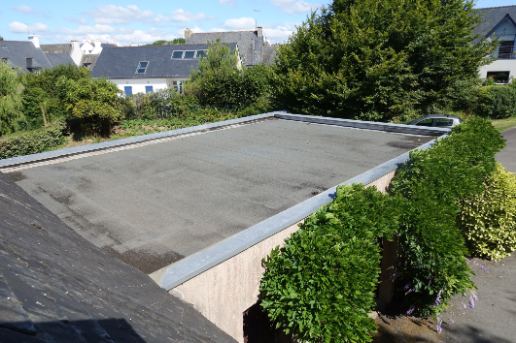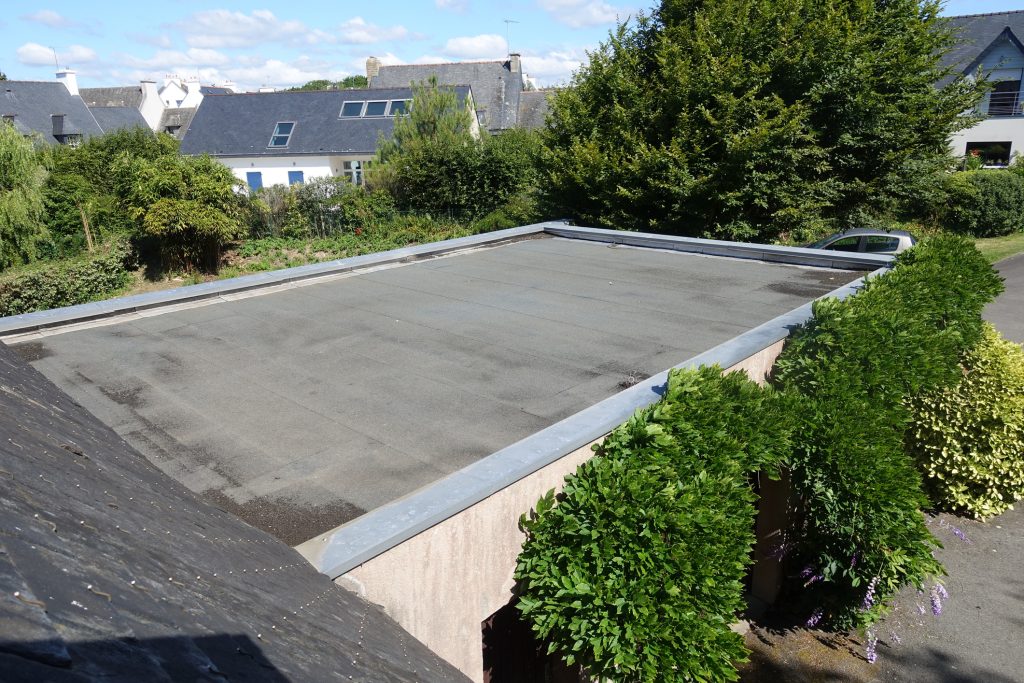Written by admin on September 20, 2024

Table of Contents:
Looking to renovate your property and considering flat roofing? This guide offers everything you need to know about Cheshire flat roofing. Flat roofs are undoubtedly one of the most preferred options for residential and commercial properties because of their ease of maintenance. Whether you’re roofing a private home or a commercial property, this flat roof is definitely a good option to consider.
Types of Flat Roofs
Flat roofs are usually used for commercial buildings, large structures, and outbuildings. They are also often used for residential properties. The first step in making an informed decision is to understand the types of flat roofs that are available.
Options available include thermoplastic membrane (PVC or TPO), rubber membrane (EPDM), build-up roofs (BUR), spray-on, modified bitumen, metal, and concrete. Others include sheet roofing systems, liquid roofing systems, and green flat roof systems, among others. Let’s elaborate briefly on some of these available options.
 What are the Benefits of Insulation?
A properly insulated flat roof can significantly reduce energy consumption and help you save on utility bills. It can also reduce condensation inside your home, which reduces the chance of mould and dampness. Plus, an insulated roof improves the energy efficiency rating of your home, which can increase its value.
Top Advantages of Flat Roofs
Flat roofs are popular in urban areas for many reasons. Here are the main benefits of choosing this roofing option:
What are the Benefits of Insulation?
A properly insulated flat roof can significantly reduce energy consumption and help you save on utility bills. It can also reduce condensation inside your home, which reduces the chance of mould and dampness. Plus, an insulated roof improves the energy efficiency rating of your home, which can increase its value.
Top Advantages of Flat Roofs
Flat roofs are popular in urban areas for many reasons. Here are the main benefits of choosing this roofing option:

- Sheet Roofing Systems
- Liquid Roofing Systems
How Does Flat Roofing Work?
Before choosing a roofing system for your structure, it’s important to understand the technicalities, benefits, and drawbacks of each roofing option. This is especially important if you’re considering installing flat roofs. So, how does a flat roof system work? How a Flat Roof is built Flat roofs consist of many layers with each serving a specific function. While flat roofs appear level, they are actually slightly inclined to allow water to run off. Contractors generally ensure a minimum slope of 1:80 for smooth surfaces, such as corrugated metal or plastic. For rougher materials, such as felt, a bigger slope of 1:60 is necessary. This slight fall is important in channelling rainwater away from the roof surface and ensuring that water doesn’t pool on the roof. Without the slope, water will gather in puddles, and this can increase the risk of leaks. With time, standing water can cause major damage to the roof, as the materials continue to weaken and crack. These cracks will allow water to seep through and lead to leaks inside the building. The right slope ensures the performance and longevity of your flat roof, making this an important aspect of flat roof design. Insulating a Flat Roof Insulation plays a big role in how well your flat roof functions. With good insulation, you can keep your home warm in the winter and cool in the summer. Basically, there are two common types of flat roof insulation – warm roof insulation and cold roof insulation.- Warm Roof Insulation: This is installed above the roof decking and is more efficient compared to cold roof insulation. This is because it prevents heat from escaping through the roof.
- Cold Roof Insulation: This is placed between the roof joists, and while it’s a cheaper option, it is not as effective in maintaining a stable indoor temperature.
 What are the Benefits of Insulation?
A properly insulated flat roof can significantly reduce energy consumption and help you save on utility bills. It can also reduce condensation inside your home, which reduces the chance of mould and dampness. Plus, an insulated roof improves the energy efficiency rating of your home, which can increase its value.
Top Advantages of Flat Roofs
Flat roofs are popular in urban areas for many reasons. Here are the main benefits of choosing this roofing option:
What are the Benefits of Insulation?
A properly insulated flat roof can significantly reduce energy consumption and help you save on utility bills. It can also reduce condensation inside your home, which reduces the chance of mould and dampness. Plus, an insulated roof improves the energy efficiency rating of your home, which can increase its value.
Top Advantages of Flat Roofs
Flat roofs are popular in urban areas for many reasons. Here are the main benefits of choosing this roofing option:
- Easy to Construct: Flat roofs are faster and easier to install than pitched roofs. This means less labour and lower costs. Since contractors don’t have to face difficulties during construction, you are also less likely to experience any costly delays.
- Easy to Maintain: One big advantage of this option is how easy it is to maintain. You can easily walk on a flat roof, making it easier to check for issues like leaks, debris, or damage. Routine maintenance is also more straightforward, which can help prevent costly repairs in the future.
- Energy Efficiency: With the right materials and insulation, flat roofs can lower energy usage significantly. As a matter of fact, some homeowners report saving up to 40% on heating and cooling costs. Installing reflective materials like PVC can also help reduce energy bills by reflecting sunlight.
- Extra Space: This roofing option provides usable space that you won’t get with sloped roofs. You can turn the roof into a garden, install solar panels, or create a rooftop terrace. This is especially valuable in cities like London, where outdoor space is limited.
- Highly Durable: When constructed properly, it can be exceptionally durable. Materials like concrete can withstand harsh weather conditions, making them resistant to damage from snow and rain. Modern flat roofing systems are also water-resistant, so you don’t have to worry about leaks.
- Limited Material Options: Unlike sloped roofs, which have many options of materials, flat roofs have fewer options. Basically, materials available include rubber, bitumen, and EPDM. Although these materials are cost-effective, they may not last as long as tiles or traditional roof shingles.
- Accumulation of Debris: Debris can easily build up on flat roofs. These include leaves, twigs, and dirt. This debris can block drains and create water pools. When this happens, the roof can get damaged over time. Therefore, we recommend regular cleaning and maintenance to keep your roof in good condition.
- Drainage Problems: One of the biggest problems with flat roofs is poor drainage. Since the roofing system doesn’t have the natural slope of pitched roofs, it’s difficult for water to flow off easily. When drains get clogged or the roof is not sealed properly, water can pool and cause leaks.
- Custom Designs for Flat Roofs
- Waterproofing Your Flat Roof

Frequently Asked Questions About Flat Roofs
Here are some common questions about flat roofs that property owners frequently ask:-
What’s the best material for a flat roof?
-
How much does it cost to replace a flat roof in the UK?
-
How long does an asphalt flat roof last?
-
How much of the roof is considered flat?
-
How often should a flat roof be inspected?